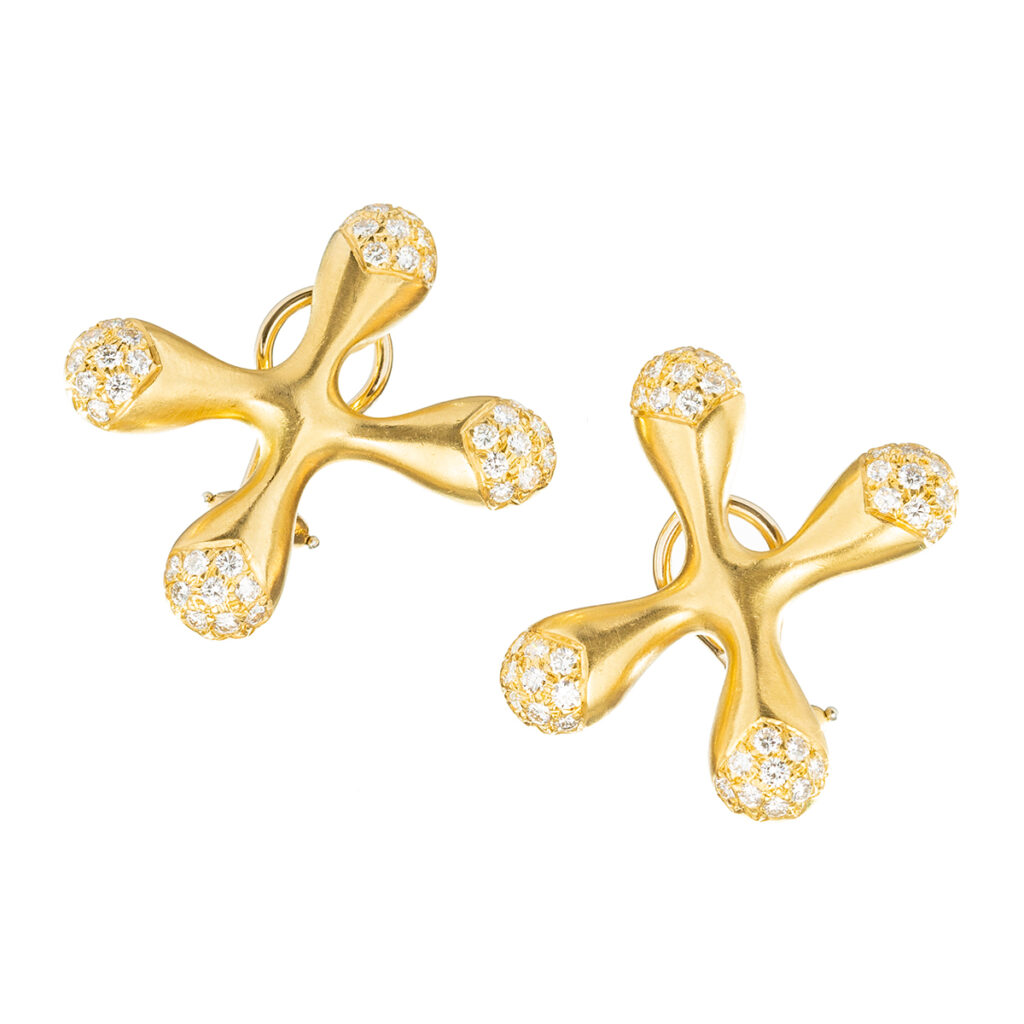Known for her metalwork and for designing jewelry punctuated with bursts of colored gemstones, Angela Cummings first made a name for herself designing for Tiffany & Co. She joined the venerable jewelry house in 1967 when she was just 23 years old and stayed until 1984. She found both career success and love while at Tiffany & Co., marrying Bruce Cummings, a gemologist at the company, in 1970.
Angela Cummings at Tiffany & Co.

Austrian born, Cummings moved to the U.S. with her parents when she was three years old and found her way back to Europe to study art at the Art Academy in Perugia, Italy and then on to Hanau, West Germany where she earned degrees in goldsmithing and gemology from Staatliche Zeichenakademie. Tiffany & Co. was her first job out of school.
Tiffany & Co., is known for promoting designers associated with the firm and Cummings was one of those designers. In 1974, she was given the distinction of being the first woman designer at the company to be acknowledged with her own collection, “Angela Cummings Exclusively for Tiffany & Co.”
Graphic Design

Cummings’ big, bold graphic designs resonated with the times in part due to her use of color and scale. In the late 1960s and early 1970s women were looking for jewelry with color that could be worn day or night, jewelry that broke the mold of the more traditional gold styles of the era. Her inlaid designs that feature organic shapes of black jade, mother of pearl, lapis lazuli and coral in gold are immediately recognizable and collectible. Her checkerboard motif is one of her best known styles. Much of Cummings jewelry has a sense of movement to it, an illusion created by a slight asymmetry in her designs.
Starting Her Own Business
Despite her success at Tiffany & Co., Cummings made the decision to leave the firm in 1983. She and her husband, Bruce, left to launch her eponymous company in 1984. A move she made to free herself from the creative constraints of working for another company. With her own company, Cummings started creating tabletop, flatware and small leather goods. Of course she continued to make jewelry.

As a designer, Cummings was very hands on. When she rendered a design Cummings would take it to the artisans who fabricated the pieces and together they would work out the final details. Allegedly, they all worked closely together for such a length of time that Cummings used a sort of “shorthand” to communicate with her crew. Like many other designers, Cummings is inspired by nature, but she is very specific about those elements and cites spiderwebs, ginkgo leaves, vines, shells, seafoam, feathers, dragonflies and orchids along with the art of sculpture as being the most influential to her creativity.
When she launched her own collection, Cummings first branded boutique was in New York City’s iconic Bergdorf Goodman, later expanding into Saks Fifth Avenue, Bloomingdale’s and Neiman Marcus. She also opened boutiques in Japan. It was important to Cummings that her creations were accessible to people, so when she launched her own collection, she had items that ranged in price from under $100 to over $100,000.
She was also brought to the forefront of fashion in 1997, when Candie’s shoe company partnered with several jewelry designers, including Cummings, to create shoes that would be sold to benefit the American Cancer Society.
Angela Cummings Designs Pearl Jewelry

In 2003, Cummings retired, closed all of her boutiques and moved to Utah with her family. In 2013 she was lured out of retirement by Assael, a company specializing in South Sea Pearls. Cummings was commissioned to design 25 pieces of pearl jewelry for the firm.
Although Cummings is now retired, her creative legacy lives on through her jewelry that is just as appealing today as when it was first made. Because Cummings stopped production of her jewelry, what is out in the market today has become very collectible for those lucky enough to find one of her jewels.
Top of page: Opal, jade, malachite, mother of pearl and gold pansy brooch by Angela Cummings for Tiffany & Co., signed Tiffany & Co., circa early 1980s, courtesy, Macklowe Gallery (@macklowegallery).
Authored by Amber Michelle
